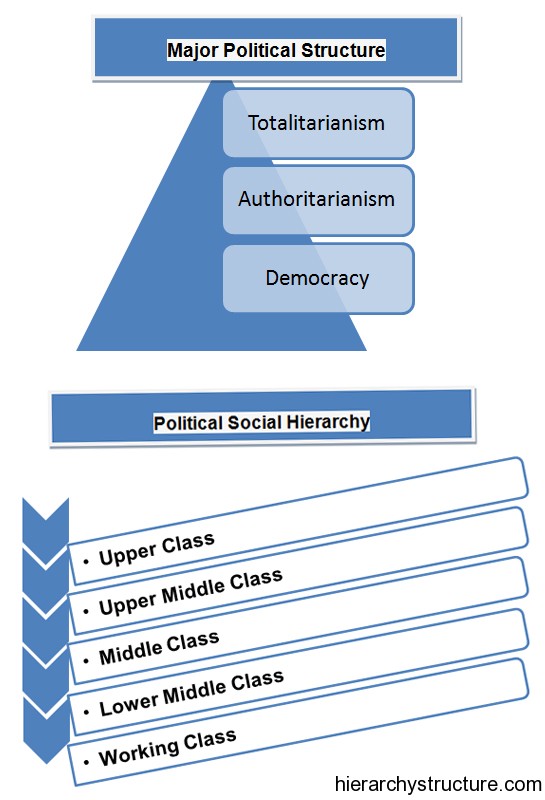Politics and society are two interdependent terms. The political attitudes are different depending upon the different classes of the society. The public opinion, both on the individual and aggregate basis is affected by the structure of the political social hierarchy. In this particular article, we will thoroughly discuss about the different specifications of classes in the society and their effects on the whole political scenario.
A term that is mainly used in the context of classifying people into groups; is social stratification. According to this theory, a certain group of people has more social, political and economic power over the other group. Social stratification is an inevitable part of the society. The concept is passed from one generation to the other.

Starting with the political context, there are three major forms of political Hierarchy structures existing in the modern nation states. The three types are :
- Totalitarianism
- Authoritarianism
- Democracy
Totalitarianism: This is a political structure,in which the political authority exercises centralized control. This is based on the absolute power of a single party or dictator. More precisely, it can be defined as the system in which, a single governing body takes hold of all the organized political, economic and social activities of the country. The nation-states exhibiting this form of political structure are North Korea, Vietnam, Chile and many African and Middle Eastern nations.
Authoritarianism: This is defined as the political system, in which the administration of government is centralized. The governing body has the absolute control, and less power is given to the public or the judicial system. Another form of authoritarianism is a monarchy, in which the primary authority is in the hands of a particular family and the power is passed through generations.
Democracy: This is a political system according to which, the country is ruled directly by people or by the representatives elected by the people.
Now coming to the social context of the political social hierarchy, the society is basically classified into five classes with upper class at the top, followed by upper middle class, middle class, traditional middle class, lower middle class and lastly, the working class.
Upper class: Upper class is the most influential socioeconomic class and exercises indirect power through the investment of capital. They don’t need to work in order to retain their status. Their status is passed from generation to generation in the form of assets.
Upper middle class:The upper middle class is characterized by individuals with high educational credentials and high salary. The individuals belonging to this class work in high level corporate organizations.
Middle class: The middle class people have salaries greater than that of the lower middle class but lower than that of the upper middle class.
Lower middle class: The individuals belonging to the lower middle class are less privileged than the superior classes. They seldom hold any advanced academic degrees and they work in average professions.
Working class: The working class is at the bottom of the political social hierarchyand they don’t have much influence on the decision making process regarding various political and social issues.
Know more about Pennsylvania Political Hierarchy Click Here
